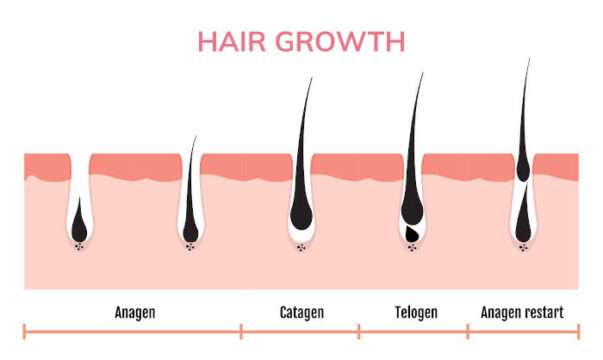Hair Follicle: Understanding Its Structure and Function
Hair follicles are complex, tiny structures located within the skin responsible for producing and growing hair. Understanding how hair follicles work and what makes them vulnerable to damage is crucial for anyone seeking effective hair reduction treatments at Albany Cosmetic and Laser Centre.
This page will guide you through the anatomy of hair follicles, their growth phases, and how modern technologies precisely target them to achieve long-lasting results.

What Is A Hair Follicle?
A hair follicle is a tiny but intricate structure within the skin that anchors the hair into place. Located in the dermis, each follicle contains a hair bulb, where living cells divide to form the hair shaft. The follicle also contains sebaceous glands, blood vessels, and nerves that support hair growth and nourishment.
The melanin present within the hair bulb plays a critical role when targeting follicles for hair reduction, as it absorbs specific light wavelengths during treatment, making the follicle vulnerable to heat damage.
The Hair Growth Cycle
Hair follicles go through a natural cycle consisting of three main phases:
- Anagen (Growth Phase): During this phase, the hair follicle is actively producing hair. This is the phase where the follicle is most susceptible to external influences aimed at disrupting hair growth.
- Catagen (Transitional Phase): A short phase where hair growth stops, and the hair follicle begins to shrink. During this phase, treatments targeting hair follicles are less effective.
- Telogen (Resting Phase): The follicle remains dormant, and the hair eventually sheds. New hair begins to grow from the same follicle as it re-enters the Anagen phase.
Why Targeting The Anagen Phase Matters
The Anagen phase is the most critical stage for effective laser hair reduction because the hair is actively growing and is well-connected to the follicle’s root. Techniques designed to disrupt hair growth are most successful when the follicle is in this stage. As hair follicles do not all enter this phase simultaneously, multiple sessions are necessary to achieve desired results.
Hair Follicle Structure Explained
Each hair follicle is made up of several essential parts:
- Hair Bulb: The rounded base of the follicle where hair cells divide and grow. This area contains high concentrations of melanin, making it an ideal target for hair reduction methods.
- Dermal Papilla: A structure at the base of the hair bulb providing blood supply and essential nutrients to support hair growth.
- Outer Root Sheath: A protective layer surrounding the follicle, ensuring proper guidance and support for developing hair.
- Inner Root Sheath: A delicate layer that helps form the hair shaft and guide it towards the surface of the skin.
Hair reduction techniques focus on disabling hair follicles by targeting their melanin content. During the Anagen phase, the follicle’s connection to the hair shaft makes it easier to damage or disable the follicle’s ability to produce hair. This process involves precisely applying energy to heat and disrupt the follicle’s structure while sparing surrounding skin tissues.
The Importance Of Understanding Hair Follicles
Knowing how hair follicles function is essential for successful hair reduction. By targeting the follicle’s growth phase and understanding its structure, you can achieve smoother, hair-free skin with long-lasting results. Modern technologies are designed to pinpoint follicles effectively, providing optimal results with minimal discomfort.
Understanding hair follicles is crucial not only for effective hair reduction treatments like laser hair removal but also for hair restoration therapies such as PRP (Platelet-Rich Plasma) for hair loss. In laser hair removal, the goal is to target and damage hair follicles during their growth phase to inhibit future hair growth. In contrast, PRP therapy aims to stimulate and nourish hair follicles, encouraging healthier and thicker hair growth. At Albany Cosmetic and Laser Centre, we use advanced technologies to either diminish or rejuvenate hair follicles, depending on your aesthetic goals.
Request Your Appointment Today
Request your consultation today and discover how our treatment can refresh your appearance.
Call us at (587) 520‑2835 or use our online booking form to schedule an appointment.
Read our privacy policy here